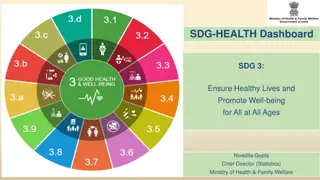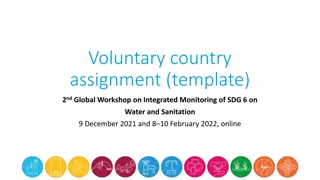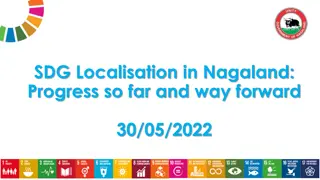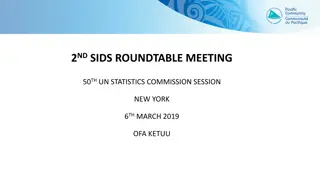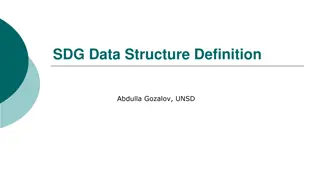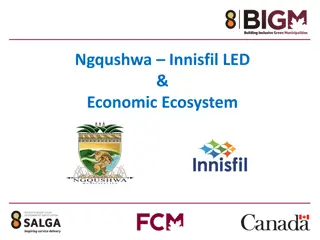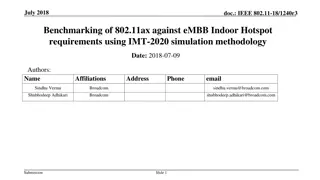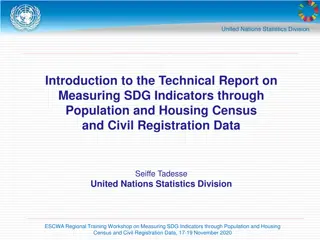Proposed Methodology for Benchmarking SDG 4 Progress and Categorizing Recent Progress
The proposed methodology outlines how to benchmark progress on SDG 4 indicators and categorize recent progress based on historical rates. It includes methods for measuring progress, such as benchmarking recent progress against historical rates and identifying the rate of progress needed to achieve national benchmarks. The categorization of recent progress helps assess countries' performance towards SDG 4 goals. This comprehensive approach aims to enhance accountability and support countries in achieving their education targets.
Download Presentation

Please find below an Image/Link to download the presentation.
The content on the website is provided AS IS for your information and personal use only. It may not be sold, licensed, or shared on other websites without obtaining consent from the author. Download presentation by click this link. If you encounter any issues during the download, it is possible that the publisher has removed the file from their server.
E N D
Presentation Transcript
Benchmarking SDG 4 Proposed Methodology for Measuring Progress TCG 9
Background Education 2030 Framework for Action: commitment to establish national benchmarks for SDG 4 as part of strengthening accountability for SDG 4 and GEMR and UIS to support countries August 2019: TCG endorsed seven indicators selected for benchmarking August 2021: Invitation to member countries to set benchmarks for 2025 and 2030 February 2022: Invitation to revise benchmarks following release of initial results, particularly for countries that did not share benchmarks
Methods proposed to benchmark progress Objective: Given that countries have established national benchmarks, the objective of the proposed methodology is to benchmark recent progress made for each indicator Underlying principle: use historical rates of progress for an indicator defined by 25thand 75th percentile of progress rates observed historically (2000 to 2015) to help benchmark recent progress (observed since 2015) Two methods proposed for each indicator (except expenditure): Method 1: benchmark each country s recent progress (since 2015) based on historical rates of progress Method 2: benchmark the rate of progress needed to achieve national benchmarks based a country s current level and on historical rates of progress, i.e.: how far from the national benchmark is the country now? One method for public expenditure indicators: use the international benchmarks for public expenditure as a percent of GDP (4 percent) and of total government expenditure (15 percent)
Categorizing recent progress Method 1 Method 2 Progress Categorization Definition Progress Categorization Definition No data No data for indicator No data No data for indicator No trend Only one data point No trend Only one data point No national benchmark Country has not established or shared a national benchmark Regression Decline in indicator recently Regression Decline in indicator recently Slow Recent progress was less than the historical 25thpercentile Slow Far from national benchmark, needs progress above the historical 75th percentile Medium Recent progress was between the historical 25thand 75thpercentiles Medium Close to national benchmark, needs progress between the historical 25th and 75thpercentiles Fast Recent progress was above the historical 75thpercentile (or within 5 percentage points of 100%) Fast Very close to national benchmark, needs progress below the historical 25thpercentile
Method 3: for public expenditure indicators Categorization based on whether public expenditure as a percent of GDP exceeds the international benchmark of 4 percent and on whether public expenditure as a percent of total government expenditure exceeds the international benchmark of 15 percent Categorization Definition No data Data is missing for either public education expenditure as a percent of GDP or as a percent of total government expenditure Achiever Achieves international benchmarks for both indicators Partial achiever Achieves international benchmarks for one of the two indicators Non-achiever Does not achieve international benchmarks for either of the indicators









